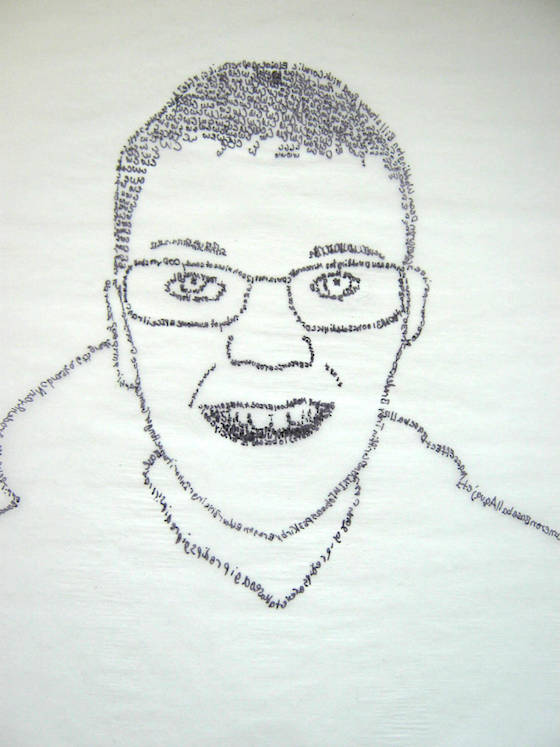Vincent Van Gogh’s textures…
Piet Mondrian’s lines and primary colors…
Pablo Picasso’s faces…
We all know certain artists make it easy to create wonderful lessons about their artwork. I know that when my students come to me as 5th graders they know several different artists because our elementary teachers do a great job of integrating art history into their lessons. However, they all know about the same handful of artists… and there are lots and lots of artists of which they have never even heard.
That is why I like to let my students explore art history when creating their projects. Having my students research their own artists helps them create unique projects and allows them to begin to develop a personal style.
Today I’d love to share things to consider when bringing art history into your lessons as well as some sample projects that incorporate the work of famous artists.
Things to Consider when Planning Projects
First, you need to decide what your students will do with the chosen artist’s information.
Are they going to create something that reflects the artist’s style? Are they going to create something that mimics a specific image? Are they going to create something for their artist? Are they going to combine the work of 2 or more artists? There are lots of options.
Next, you must decide how your students are going to choose their artists.
Do you have a list of 20-30 pre-selected artists for them to choose from? Do you have a specific art movement, style or time period you want them to research? Do you have them select a specific subject matter?
Finally, you’ll have to decide where your students will find information about the artist.
Do you want to create a website or document with links to specific sites? Do you want to create and print out summary sheets about each artist? I don’t recommend a “just look online” approach as there is too much out there, especially for the elementary and middle grades.
Sample Lessons
1. Sneaking into Art Artist Cards
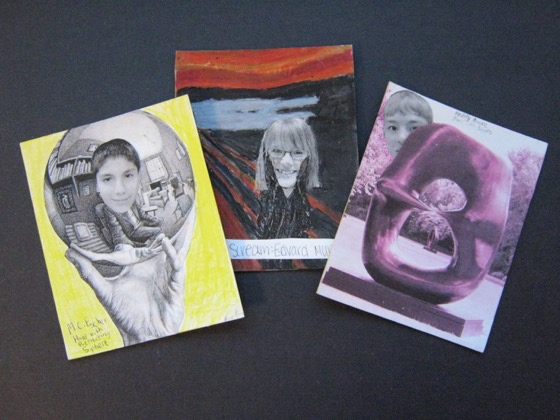
I printed out 30 art images. Students selected their artists based on the images they liked best. We went to the computer lab and, using Wikipedia, they filled out the back of their artist cards with information about their artists. On the front of their cards they “snuck” themselves into the original art images using media of their choice. Note: If you are not comfortable having your students use Wikipedia as an only source, consider using the Getty, NGA or MOMA sites as well.
2. Artist Tree Houses
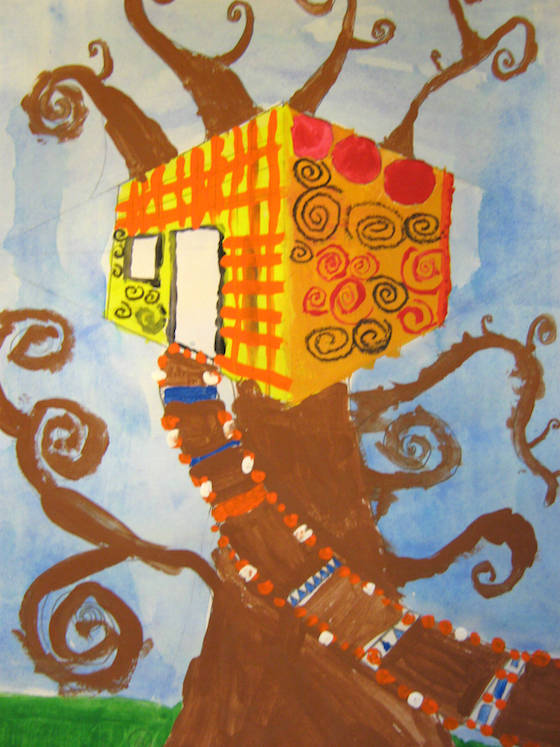
Students randomly drew artists’ names from a cup. They were then given the task of designing tree houses for their “clients.” I had a summary paper for each “client” with artwork examples and his or her main information. Students used perspective drawing to create the tree houses then added unique details that reflected their artists. One of my favorite parts was having my students share their pieces, thereby teaching the entire class about 20+ different artists. You can find some examples here and the full AOE lesson plan here.
3. Personal Art Galleries
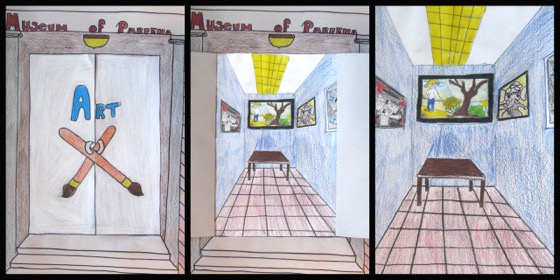
Students drew art galleries following the rules of perspective. When the students had a minimum of 3 blank canvases on their gallery walls, I handed out our old “Introducing Art” textbooks. I told them they could “collect” any artwork they wanted as long as it wasn’t a student example. When they finished re-creating their selection of artworks they created exteriors for their galleries, making the pieces interactive.
4. The Original Selfie
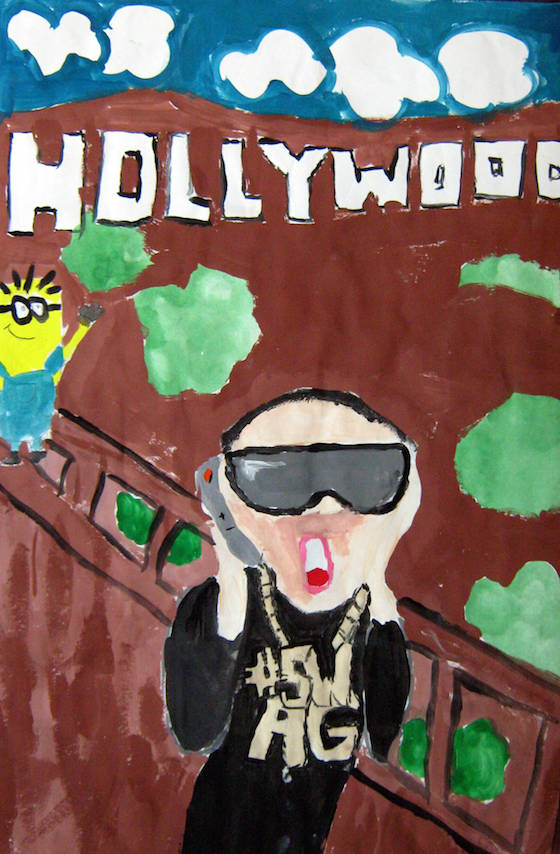
We discussed how painting a self-portrait was the “original selfie.” I created a Google document with links to different artists’ self-portraits and students spent time researching before selecting an artist’s image they wanted to update. Students worked to recreate each artist’s self-portrait but updated the clothing, setting or other aspects to reflect modern day. You can see some other examples here.
5. Portrait Style
I created a set of cards that described different art styles. Each student had to randomly choose one of the cards from a pile. Then, the students researched their art styles before creating self-portraits in those specific styles. You can see more examples here.
These are just a few ideas of ways to use art history to add choice to your lesson planning. If I was teaching high school, I would love to do a project based on one of my favorite YouTube channels, Epic Rap Battles of History. Note- make sure you preview first as some have adult language and content.
…and in honor of February, here is a link to a pinterest board of heart art projects, all based on different artists!
How do you add art history to your lessons?
Who is your favorite artist to teach?
Magazine articles and podcasts are opinions of professional education contributors and do not necessarily represent the position of the Art of Education University (AOEU) or its academic offerings. Contributors use terms in the way they are most often talked about in the scope of their educational experiences.
